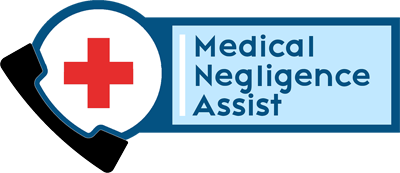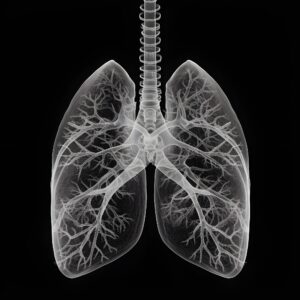In this guide, we discuss claiming compensation for pulmonary embolism negligence after a medical professional provided you with care that fell below the correct standard and caused you avoidable harm.
A pulmonary embolism is when a blood clot blocks a blood vessel in your lungs and can be fatal if not treated promptly. If you’re eligible, you could seek compensation to address the impact of having a pulmonary embolism develop, misdiagnosed or left untreated.
As we move through this guide, we first discuss what medical negligence is and when a medical negligence claim is considered eligible. We then explain how someone could suffer avoidable harm from a blood clot due to healthcare professionals being negligent.
Furthermore, we discuss the types of evidence you could gather to show medical negligence has occurred. Following this, we provide an explanation of how compensation values are calculated to address the different impacts of the avoidable harm you suffered.
To conclude our guide, we provide guidance on the benefits of instructing a No Win No Fee solicitor to represent your case and the terms under which they can offer their helpful services.
If you have any questions regarding how to claim compensation, please get in touch with our team. To do so, you can:
- Call 0800 652 3087.
- Ask about your claim online by sending off your details via our form.
- Message via our live support chat box.
Choose A Section
- When Could You Claim Compensation For Pulmonary Embolism Negligence?
- What Is Pulmonary Embolism Negligence?
- How To Prove Clinical Negligence Claims For A Blood Clot
- What Compensation Could You Claim For Pulmonary Embolism Negligence?
- Claim Compensation For Pulmonary Embolism Negligence On A No Win No Fee Basis
- Further Guidance On Making A Medical Negligence Claim
When Could You Claim Compensation For Pulmonary Embolism Negligence?
You could claim compensation for pulmonary embolism negligence if you can show that medical negligence occurred.
A medical professional’s duty of care is to ensure they always deliver the correct standard of care to the patients they are providing treatment to. Medical negligence is when a medical professional breaches their duty of care, and in turn, a patient suffers harm that could have been avoided otherwise.
As such, in order to seek medical negligence compensation, you need to prove the following:
- A medical professional owed a duty of care.
- They breached their duty of care.
- Due to this breach, you suffered avoidable harm.
How Long Do You Have To Claim For Pulmonary Embolism Negligence?
To also have an eligible pulmonary embolism negligence claim and to be able to begin the claims process, you must do so within the medical negligence claims time limit. This is typically 3 years, as the Limitation Act 1980 states, and commences from either the date medical negligence occurred or the date you became aware that medical negligence occurred.
There are only some circumstances which would result in exceptions being made to the time limit. These circumstances include:
- If the claimant is under the age of 18 years old.
- If the claimant cannot make a claim themselves as they lack the mental capacity to do so.
In these instances, the time limit is paused and a litigation friend can start the claim on behalf of the claimant. For minors, if no claim has been made by the time they turn 18, they will have three years from their 18th birthday. If no claim has been made for those with a reduced mental capacity, and they recover their capacity, they will have three years from the recovery date to start legal proceedings themselves.
Contact us, and you can learn more about the limitation period for medical negligence claims and exceptions can apply.
What Is Pulmonary Embolism Negligence?
As mentioned, a pulmonary embolism is a blood clot in the lung. It often happens when part of a blood clot dislodges itself from your leg and travels to your lungs resulting in a blockage. It is a serious condition that can be dangerous and, if not treated early, life-threatening.
Below are a few examples of how someone could suffer a pulmonary embolism or complications from it due to negligent actions from a medical professional:
- You are at high risk of developing a blood clot while being treated for another condition in hospital. However, there is a failure by hospital staff to take steps to consider the risk factors and prevent deep vein thrombosis (DVT) from developing. This is a blood clot in a vein or blood vessels. As a result, you develop a blood clot leading to a pulmonary embolism.
- Although, you go to A&E with clear symptoms of DVT, such as chest pain and leg pain, and pulmonary embolism, but you are diagnosed with a soft tissue injury to your leg. The misdiagnosed blood clot could lead to a stroke occurring after the blood clot breaks off and travels up your body, and consequent brain damage.
- You were referred to hospital for an ultrasound by your GP with suspected DVT. However, the sonographer failed to identify the blood clot and the missed diagnosis led to you suffering heart and lung damage for which you later required emergency surgery.
Please keep in mind that not all cases involving a pulmonary embolism will form the basis of a valid compensation claim. You need to prove that a medical professional breached their duty of care, and this resulted in you suffering avoidable harm.
Call our team to discuss pulmonary embolism negligence claims in more detail.
How To Prove Clinical Negligence Claims For A Blood Clot
Here are some types of evidence which you can collect for proof of medical negligence leading to a pulmonary embolism developing, being left untreated, or misdiagnosed:
- Copies of your medical records, such as an X-ray or ultrasound scan. If you were misdiagnosed, your records could show the original diagnosis and the correct diagnosis you later received. They can also show the medical treatment you received and any symptoms you suffered.
- Witness contact details if possible. For example, if any friends or family attended your medical appointments with you.
- Letters you may have that date the medical appointments you had, or copies of letters from the hospital or your GP.
- Photographs of any visible signs of your avoidable harm.
- A diary detailing your treatment and symptoms.
If you are eligible, you could instruct one of our expert medical negligence solicitors to represent your claim. One of the services they offer is helping claimants gather sufficient evidence to prove their case.
To see whether you can benefit from our solicitor’s services, please get in touch with us today.
What Compensation Could You Claim For Pulmonary Embolism Negligence?
The compensation payout that could be awarded for a successful pulmonary embolism negligence claim could be made up of two heads of loss.
The first head of loss, general damages, will always be awarded in successful medical negligence claims. General damages compensate for the psychological and physical impact of the avoidable harm that you have suffered due to a medical professional breaching their duty of care.
Other factors considered when calculating the value of this head of loss, include:
- The severity of the pain and suffering experienced.
- How your quality of life has changed.
- How long the expected recovery time is and what treatment is required.
You may also be invited to an individual medical assessment during the claims process. A medical report generated from this assessment, plus your medical records, can be compared to the Judicial College Guidelines (JCG), which is also used to help value general damages. The JCG is a publication with different guideline compensation bracket values for different types of psychological and physical injuries and illnesses.
Compensation Table
In the table below, you can find some figures from the JCG. None of the figures in the table can be guaranteed for your claim since the value of all cases are calculated based on each person’s unique circumstances.
Please note, the top line is not from the JCG.
| Injury | Severity | Guideline compensation brackets | Notes |
|---|---|---|---|
| Multiple serious injuries and/or illnesses and financial costs | Serious | Up to £500,000+ | Compensation for the physical and mental impact of multiple serious injuries and/or illnesses plus each of their financial losses such as medication costs, care costs, and loss of earnings. |
| Brain damage | Moderately severe (b) | £219,070 to £282,010 | The person will need constant care due to having a very serious disability that is either physical, such as limb paralysis, or cognitive, such as a marked impairment of personality and intellect. |
| Moderate (c) (i) | £150,110 to £219,070 | Cases involving a moderate to severe personality change, intellect deficit, and effects on the senses with an increased risk of epilepsy. | |
| Moderate (c) (iii) | £43,060 to £90,720 | Memory and concentration are affected and the person's ability to work is reduced. However, any dependence on others is limited. | |
| Chest | Complete removal of one lung and/or serious heart damage (a) | £100,670 to £150,110 | There is prolonged, serious pain and suffering with significant permanent scarring. |
| Heart, lung(s) and/or chest damage (b) | £65,740 to £100,670 | Damage is permanent and there is impaired function, physical disability, and a reduced life expectancy. | |
| Damage to chest and lung(s) (c) | £31,310 to £54,830 | Leading to some continuing disability. | |
| Scarring | A number of noticeable laceration scars or a single disfiguring scar | £7,830 to £22,730 | Scarring can be found on the chest, or back, for example. |
What Are Special Damages In A Deep Vein Thrombosis Negligence Claim?
The second head of loss, special damages, could also be awarded in successful medical negligence claims. Special damages compensate the money you have lost because of the avoidable harm you suffered due to a medical professional providing substandard care, such as:
- Lost earnings from missing work.
- The cost of home and car adaptations, for example, adding a stair lift in your house.
- Medical expenses, such as medication costs.
- Travel costs, such as taxis to and from hospital appointments.
You should keep any evidence you have of financial losses, such as payslips, invoices, and receipts.
If you want more information regarding medical negligence compensation and how much compensation could be awarded for a successful pulmonary embolism negligence claim, contact our team today.
Claim Compensation For Pulmonary Embolism Negligence On A No Win No Fee Basis
You can claim compensation for pulmonary embolism negligence on a No Win No Fee basis with us at Medical Negligence Assist. If our medical negligence team confirms your claim eligibility, you could be offered a Conditional Fee Agreement (CFA) by one of our solicitors. CFAs are a specific type of No Win No Fee agreement.
The main advantages of a CFA is that you do not pay fees for your solicitor’s work and services upfront, during the claims process, or if your claim is not successful.
A success fee is taken from the compensation of successful claims. Success fees are a percentage of the compensation which are legally capped to ensure most of the compensation always goes to the claimant.
Contact Us
Contact our team today if you wish to begin a pulmonary embolism negligence claim and seek compensation for your suffering caused by misdiagnosed blood clots. Our advisors are available to speak 24/7 and give you a free initial consultation. You can also find out whether you can instruct one of our specialist No Win No Fee medical negligence solicitors to represent you.
To reach out, you can:
- Call 0800 652 3087.
- Ask about your claim online by sending off your details via our form.
- Message via our live support chat box.
Further Guidance On Making A Medical Negligence Claim
For further guidance on clinical negligence claims, browse our similar published guides:
- Find out whether you can claim compensation after receiving the wrong dosage of medication due to clinical negligence.
- Discover how to make a claim against a private healthcare provider.
- Learn about stroke misdiagnosis compensation claims with our helpful guide.
Alternatively, you may find these external sites useful:
- Information from Gov.UK on how to claim Statutory Sick Pay (SSP) if you’re too unwell to work.
- Guidance on what duty of care to expect from a nurse from the Royal College of Nursing (RCN).
- Advice on what good medical practice to expect from doctors from the General Medical Council (GMC).
- Information from the NHS on blood thinning medication and anticoagulant medication used to help blood flow.
We hope you have found this guide on claiming compensation for pulmonary embolism negligence helpful. If you have any questions, please don’t hesitate to get in touch.




